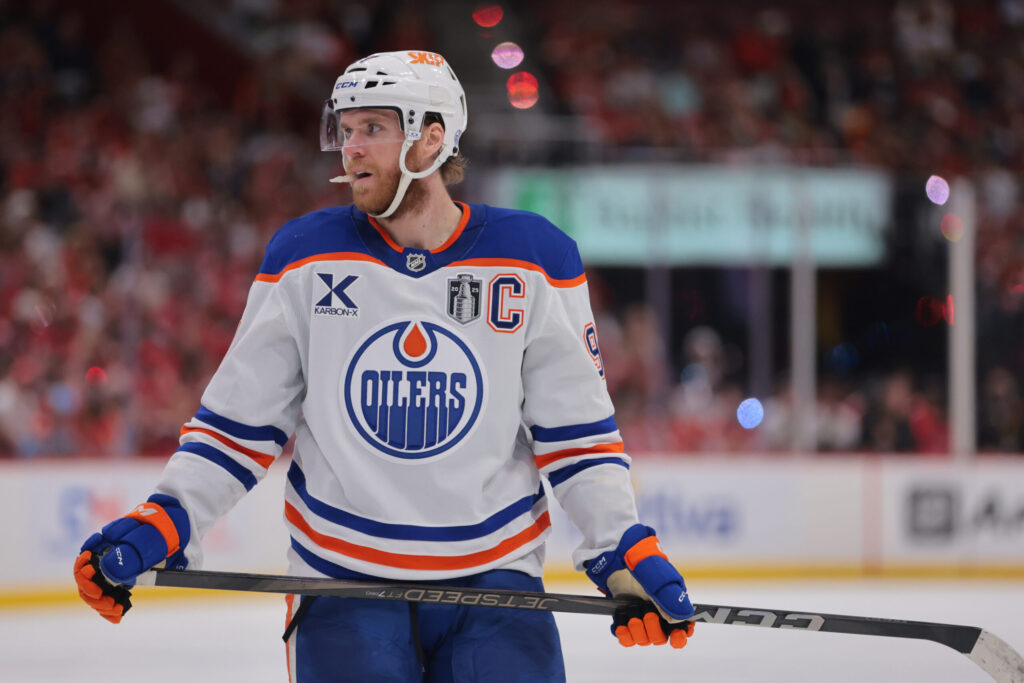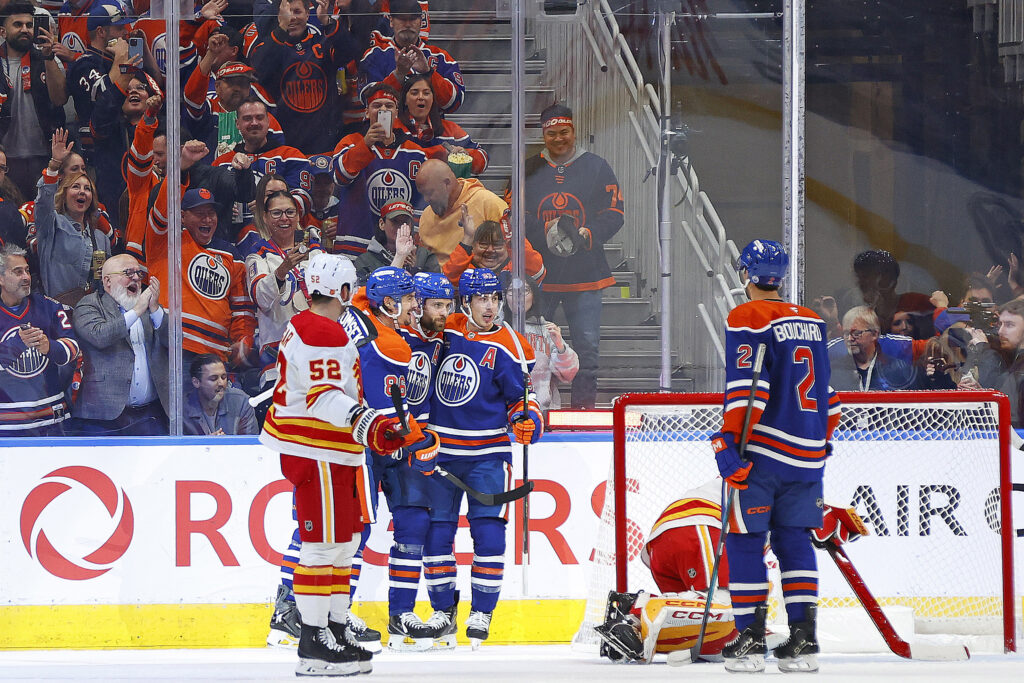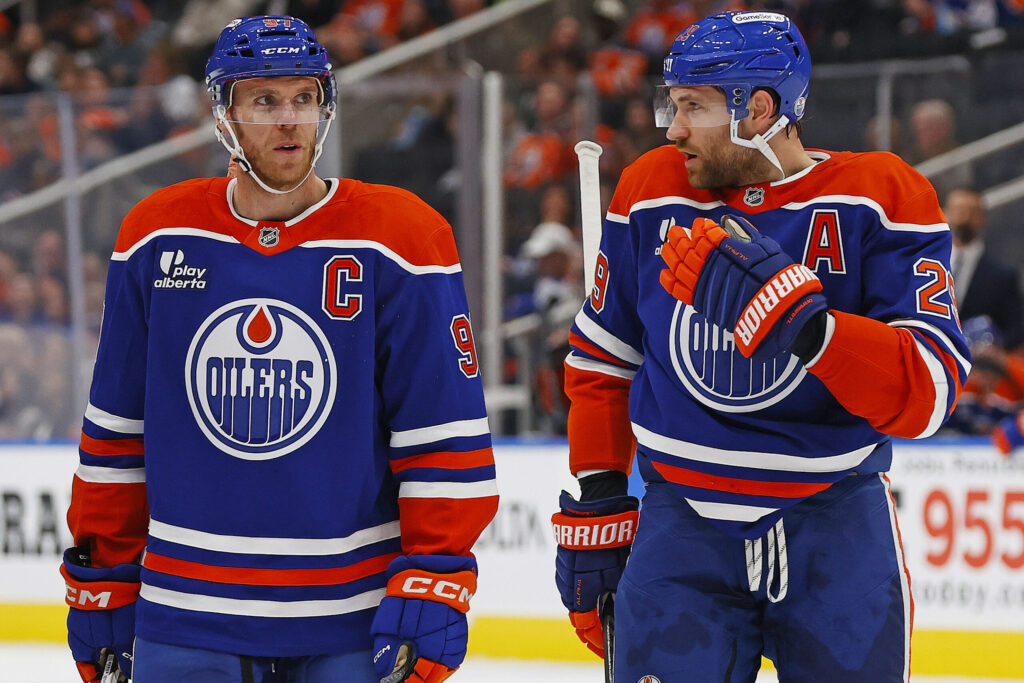For fans of the Edmonton Oilers, the phrase “slow start” typically conjures up images of defensive breakdowns, questionable goaltending, and a desperate climb back to playoff contention before the calendar even flips to December. Yet, four games into the 2025-26 campaign, the team sits with a comfortable 2−1−1 record. They are banking points. They are not, however, scoring goals—a problem so uncharacteristic for an Oilers team led by Connor McDavid and Leon Draisaitl that it warrants a closer look. This isn’t the frantic, five-alarm fire of seasons past; it’s a quiet, simmering issue of a high-powered engine struggling to get out of first gear.
Also on the EDGE – The $25 Million Ultimatum: McDavid Puts the Oilers on the Clock
A New Kind of Struggle
While the Oilers have just one regulation loss, the offensive boxcars tell a different story. Through four contests, the team has mustered just 10 goals total. A deeper dive reveals a more concerning picture: only four of those goals have come at 5-on-5, and two were empty-net tallies that padded the final score. The offensive firepower that defines this organization has been conspicuously absent.
Captain Connor McDavid acknowledged the underwhelming output but correctly framed the situation. “We’re winning games,” he stated, emphasizing the ultimate priority. This is the crucial distinction between this year’s offensive drought and previous early-season collapses. In the fall of 2024, the Oilers stumbled to an 0−3−0 start, getting outscored 15−3 while posting a disastrous team save percentage of .783. A year before that, similar goaltending woes torpedoed a team that, by all underlying metrics, was driving play effectively.

This season, the script has flipped. The Oilers are winning because of their defensive structure and goaltending, not in spite of it. Stuart Skinner’s 30-save shutout against a tough New York Rangers squad stands as a testament to this new reality. The team is finding ways to secure points while the offense navigates a significant transitional period, a luxury they have rarely been afforded in the McDavid era. The foundation is holding firm, buying valuable time for the chemistry experiment unfolding up front.
The Blender is Out Early
That experiment is being conducted by head coach Kris Knoblauch, who has shown he is not afraid to make aggressive adjustments, even with a winning record. After just four games, the marquee pairing of McDavid and Draisaitl on the top line has been shelved. Rather than a move born of desperation, this appears to be a calculated decision to spread the offensive wealth and force new combinations to find their footing.
The need for experimentation is undeniable. The Oilers’ forward group underwent a massive facelift in the offseason. Gone are veteran wingers like Corey Perry, Viktor Arvidsson, Jeff Skinner, and Evander Kane. In their place is a cohort of six new faces still learning the systems and their linemates: Matt Savoie, Ike Howard, Trent Frederic, David Tomášek, Andrew Mangiapane, and Jack Roslovic. Compounding the challenge is the absence of 50-goal scorer Zach Hyman, who is not expected back until November.
Knoblauch’s willingness to shuffle the deck this early is a proactive approach to a complex problem. He’s not waiting for the offense to stall completely; he’s actively seeking the combinations that will ignite it. As McDavid noted, the team is adjusting to a “new system,” suggesting player buy-in for the fluid lineup changes.
Also on the EDGE – Oilers Fortify Their Roster With Ekholm, Walman & Roslovic Signings
Dissecting the New Combinations
The result of Knoblauch’s latest shuffle is a completely new-look top six. McDavid is now flanked by Andrew Mangiapane and David Tomášek. Mangiapane has been one of the few offensive bright spots, finding the back of the net in two of the first four games. The real story, however, is Tomášek. At 29, the NHL rookie has earned a stunning promotion to the top line through sheer effectiveness. His hockey IQ, intelligent positioning, and tenacity in board battles have clearly impressed the coaching staff. He has also been capably filling Hyman’s net-front role on the top power-play unit, a testament to his versatility and quick adaptation.
The shake-up creates a formidable second unit, with Leon Draisaitl now centering Ryan Nugent-Hopkins and the recently acquired Jack Roslovic. On paper, this trio possesses the skill and offensive instincts to function as a “1B” line, easing the burden on McDavid’s group and creating matchup nightmares for opponents.

The changes extend to the bottom six as well. Trent Frederic appears to be settling in as the third-line center between Vasily Podkolzin and Kasperi Kapanen, a combination that has the potential to be a “hard and fast” line capable of generating energy and wearing down opposition defenses. Meanwhile, promising rookies Matt Savoie and Ike Howard have been moved to the fourth line with veteran Adam Henrique. Despite Savoie’s strong play in his initial showing, this move seems less a demotion and more a strategic placement to create a balanced fourth line with a mix of youth, speed, and veteran savvy.
Finding the Formula
Coach Knoblauch summed up the process succinctly, stating he is “trying to find combinations that work.” The early-season points provide the runway to do just that. The current lines are likely just the latest iteration in a series of adjustments that will continue throughout October and into November, especially once Zach Hyman is ready to return.
For a fan base conditioned to panic at the first sign of trouble, the current situation requires a recalibration. The Oilers are winning, their goaltending is solid, and their coach is methodically working to solve an offensive puzzle created by unprecedented roster turnover. The goals will almost certainly come. For now, the team is proving it can win games without them—and that might be the most encouraging development of all.
Created with the aid of Gemini AI
